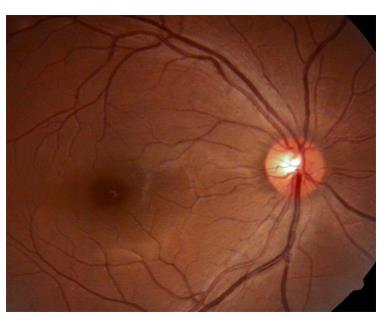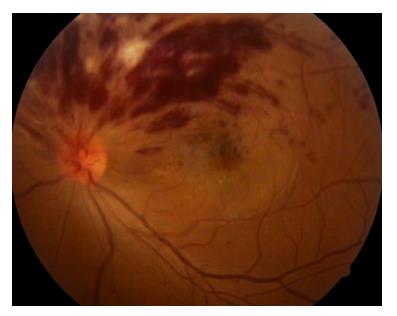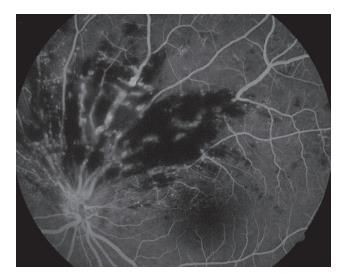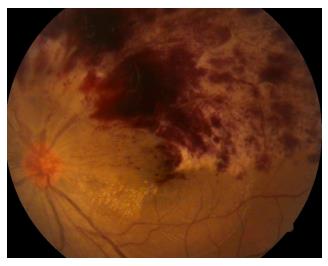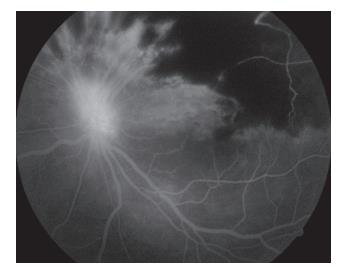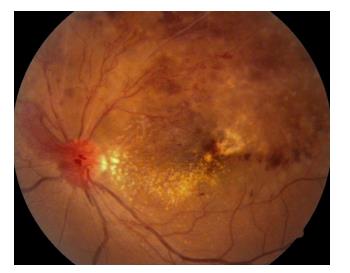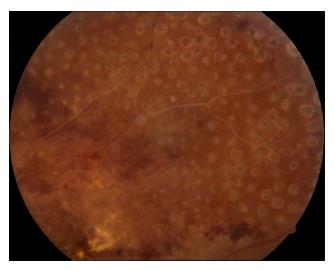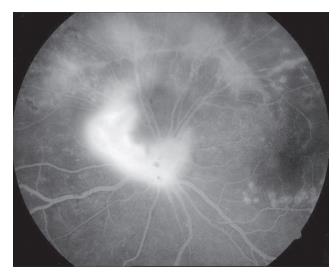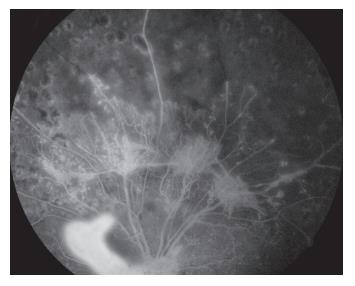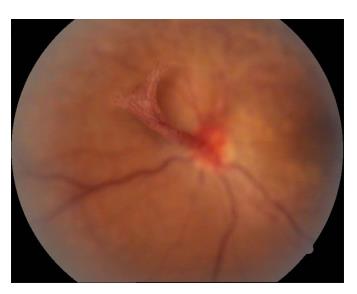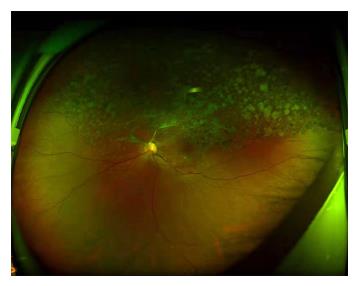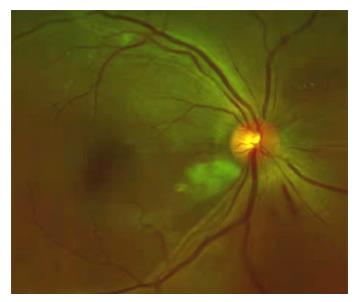1、Rogers S, McIntosh RL, Cheung N, et al. The prevalence of retinal vein
occlusion: pooled data from population studies from the United States,
Europe, Asia, and Australia[J]. Ophthalmology, 2010, 117(2): 313-319.e1.Rogers S, McIntosh RL, Cheung N, et al. The prevalence of retinal vein
occlusion: pooled data from population studies from the United States,
Europe, Asia, and Australia[J]. Ophthalmology, 2010, 117(2): 313-319.e1.
2、Campochiaro PA. Ocular neovascularization[ J]. J Mol Med (Berl),
2013, 91(3): 311-321.Campochiaro PA. Ocular neovascularization[ J]. J Mol Med (Berl),
2013, 91(3): 311-321.
3、Kolar P. Risk factors for central and branch retinal vein occlusion: a
meta-analysis of published clinical data[ J]. J Ophthalmol, 2014, 2014:
724780.Kolar P. Risk factors for central and branch retinal vein occlusion: a
meta-analysis of published clinical data[ J]. J Ophthalmol, 2014, 2014:
724780.
4、Vieira MJ, Campos A, do Carmo A, et al. Thrombophilic risk factors for
retinal vein occlusion[ J]. Sci Rep, 2019, 9(1): 18972.Vieira MJ, Campos A, do Carmo A, et al. Thrombophilic risk factors for
retinal vein occlusion[ J]. Sci Rep, 2019, 9(1): 18972.
5、Moisseiev E, Sagiv O, Lazar M. Intense exercise causing central retinal
vein occlusion in a young patient: case report and review of the
literature[ J]. Case Rep Ophthalmol, 2014, 5(1): 116-120.Moisseiev E, Sagiv O, Lazar M. Intense exercise causing central retinal
vein occlusion in a young patient: case report and review of the
literature[ J]. Case Rep Ophthalmol, 2014, 5(1): 116-120.
6、Csernok E, Bossuyt X. Investigations in systemic vasculitis. The role of
the laboratory[ J]. Best Pract Res Clin Rheumatol, 2018, 32(1): 52-62.Csernok E, Bossuyt X. Investigations in systemic vasculitis. The role of
the laboratory[ J]. Best Pract Res Clin Rheumatol, 2018, 32(1): 52-62.
7、Hayreh SS. Venous occlusive disease: management 25 years ago[ J].
Retina, 2006, 26(6 Suppl): S51-S62.Hayreh SS. Venous occlusive disease: management 25 years ago[ J].
Retina, 2006, 26(6 Suppl): S51-S62.
8、陈露璐, 陈有信. 2019年《EURETINA视网膜静脉阻塞诊疗指
南》解读[ J]. 中华实验眼科杂志, 2020, 38(1): 60-63.
CHEN LL, CHEN YX. Interpretation of the 2019 Guidelines
for the Management of retinal vein occlusion by the EURETINA[ J].
Chinese Journal Of Experimental Ophthalmology, 2020, 38(1): 60-63.陈露璐, 陈有信. 2019年《EURETINA视网膜静脉阻塞诊疗指
南》解读[ J]. 中华实验眼科杂志, 2020, 38(1): 60-63.
CHEN LL, CHEN YX. Interpretation of the 2019 Guidelines
for the Management of retinal vein occlusion by the EURETINA[ J].
Chinese Journal Of Experimental Ophthalmology, 2020, 38(1): 60-63.
9、Stenner AM, Frederiksen KH, Grauslund J. Is there still a role of
macular laser treatment in branch retinal vein occlusion in the era of
intravitreal injections?[ J]. Acta Ophthalmol, 2020, 98(1): 9-21.Stenner AM, Frederiksen KH, Grauslund J. Is there still a role of
macular laser treatment in branch retinal vein occlusion in the era of
intravitreal injections?[ J]. Acta Ophthalmol, 2020, 98(1): 9-21.
10、赵明威, 苗恒. 视网膜静脉阻塞诊疗重在全病程管理[ J]. 中华眼
科杂志, 2020, 56(4): 246-249.
ZHAO MW, MIAO H. Whole course management is the key
to retinal vein occlusion[ J]. Chinese Journal of Ophthalmology, 2020,
56(4): 246-249.赵明威, 苗恒. 视网膜静脉阻塞诊疗重在全病程管理[ J]. 中华眼
科杂志, 2020, 56(4): 246-249.
ZHAO MW, MIAO H. Whole course management is the key
to retinal vein occlusion[ J]. Chinese Journal of Ophthalmology, 2020,
56(4): 246-249.
11、Hayreh SS. Photocoagulation for retinal vein occlusion[ J]. Prog Retin
Eye Res, 2021, 85: 100964.Hayreh SS. Photocoagulation for retinal vein occlusion[ J]. Prog Retin
Eye Res, 2021, 85: 100964.
12、Hayreh SS. Ocular vascular occlusive disorders: natural history of visual
outcome[ J]. Prog Retin Eye Res, 2014, 41: 1-25.Hayreh SS. Ocular vascular occlusive disorders: natural history of visual
outcome[ J]. Prog Retin Eye Res, 2014, 41: 1-25.
13、Alizadeh E, Mammadzada P, André H. The different facades of retinal
and choroidal endothelial cells in response to hypoxia[ J]. Int J Mol
Sci, 2018, 19(12): 3846.Alizadeh E, Mammadzada P, André H. The different facades of retinal
and choroidal endothelial cells in response to hypoxia[ J]. Int J Mol
Sci, 2018, 19(12): 3846.
14、Campbell M, Doyle SL. Current perspectives on established and novel
therapies for pathological neovascularization in retinal disease[ J].
Biochem Pharmacol, 2019, 164: 321-325.Campbell M, Doyle SL. Current perspectives on established and novel
therapies for pathological neovascularization in retinal disease[ J].
Biochem Pharmacol, 2019, 164: 321-325.
15、王雅芬, 郭长梅. 巨噬细胞的异质性在视网膜新生血管中的作
用[ J]. 国际眼科纵览, 2018, 42(2): 119-124.
WAN YF, GUO CM. The role of heterogeneity of
macrophages in retinal neovascularization[ J]. International Review of
Opthalmology, 2018, 42(2): 119-124.王雅芬, 郭长梅. 巨噬细胞的异质性在视网膜新生血管中的作
用[ J]. 国际眼科纵览, 2018, 42(2): 119-124.
WAN YF, GUO CM. The role of heterogeneity of
macrophages in retinal neovascularization[ J]. International Review of
Opthalmology, 2018, 42(2): 119-124.
16、秦海峰, 徐国旭, 张敬法. 缺氧和炎症在视网膜静脉阻塞继发黄
斑水肿中的作用[ J]. 国际眼科纵览, 2022, 46(2): 173-178.
QIN HF, XU GX, ZHANG JF. Roles of hypoxia and
inflammation in the pathogenesis of macular edema secondary to
retinal vein occlusion[ J]. International Review of Ophthalmology,
2022, 46(2): 173-178.秦海峰, 徐国旭, 张敬法. 缺氧和炎症在视网膜静脉阻塞继发黄
斑水肿中的作用[ J]. 国际眼科纵览, 2022, 46(2): 173-178.
QIN HF, XU GX, ZHANG JF. Roles of hypoxia and
inflammation in the pathogenesis of macular edema secondary to
retinal vein occlusion[ J]. International Review of Ophthalmology,
2022, 46(2): 173-178.
17、王惠英, 李臻, 徐蔚, 等. 视网膜激光光凝后糖尿病大鼠眼玻璃体
中色素上皮衍生因子的表达[ J]. 中华眼底病杂志, 2006, 22(1):
52-53.
WANG HY, LI Z, XU W, et al. Expression of pigment
epithelium-derived factors in vitreous of diabetic rats after retinal laser
photocoagulation[ J]. Chinese Journal of Ocular Fundus Diseases,
2006, 22(1): 52-53.王惠英, 李臻, 徐蔚, 等. 视网膜激光光凝后糖尿病大鼠眼玻璃体
中色素上皮衍生因子的表达[ J]. 中华眼底病杂志, 2006, 22(1):
52-53.
WANG HY, LI Z, XU W, et al. Expression of pigment
epithelium-derived factors in vitreous of diabetic rats after retinal laser
photocoagulation[ J]. Chinese Journal of Ocular Fundus Diseases,
2006, 22(1): 52-53.
18、王海波. 抗VEGF药物联合PRP治疗新生血管性青光眼的效
果[ J]. 中国医药指南, 2019, 17(22): 72.
WANG HB. Anti-VEGF medicine with PRP for neovascular
glaucoma[ J]. Guide of China Medicine, 2019, 17(22): 72.王海波. 抗VEGF药物联合PRP治疗新生血管性青光眼的效
果[ J]. 中国医药指南, 2019, 17(22): 72.
WANG HB. Anti-VEGF medicine with PRP for neovascular
glaucoma[ J]. Guide of China Medicine, 2019, 17(22): 72.
19、海鸥, 刘芳, 高丹宇. 玻璃体腔注射康柏西普联合Ahmed青光眼
引流阀植入和视网膜光凝治疗新生血管性青光眼[ J]. 中华眼
视光学与视觉科学杂志, 2019, 21(11): 838-841.
HAI O, LIU F, GAO DY. Intravitreal injection of conbercept
combined with Ahemd glaucoma valve implants and panretinal
photocoagulation treatment for neovascular glaucoma[ J]. Chinese
Journal of Optometry Ophthalmology and Visual Science, 2019,
21(11): 838-841海鸥, 刘芳, 高丹宇. 玻璃体腔注射康柏西普联合Ahmed青光眼
引流阀植入和视网膜光凝治疗新生血管性青光眼[ J]. 中华眼
视光学与视觉科学杂志, 2019, 21(11): 838-841.
HAI O, LIU F, GAO DY. Intravitreal injection of conbercept
combined with Ahemd glaucoma valve implants and panretinal
photocoagulation treatment for neovascular glaucoma[ J]. Chinese
Journal of Optometry Ophthalmology and Visual Science, 2019,
21(11): 838-841
20、张桂, 刘军, 李中凯. 全视网膜激光光凝联合玻璃体腔注射雷珠
单抗治疗新生血管性青光眼效果观察[ J]. 中国实用医刊, 2017,
44 (23): 64-66.
ZHANG G , LIU J , LI Zk. Effect of pan retinal
photocoagulation combined with intravitreal injection of ranibizumab
on neo-vascular glaucoma[ J]. Chinese Journal of Practical Medicine,
2017, 44(23): 64-66.张桂, 刘军, 李中凯. 全视网膜激光光凝联合玻璃体腔注射雷珠
单抗治疗新生血管性青光眼效果观察[ J]. 中国实用医刊, 2017,
44 (23): 64-66.
ZHANG G , LIU J , LI Zk . Effect of pan retinal
photocoagulation combined with intravitreal injection of ranibizumab
on neo-vascular glaucoma[ J]. Chinese Journal of Practical Medicine,
2017, 44(23): 64-66.

